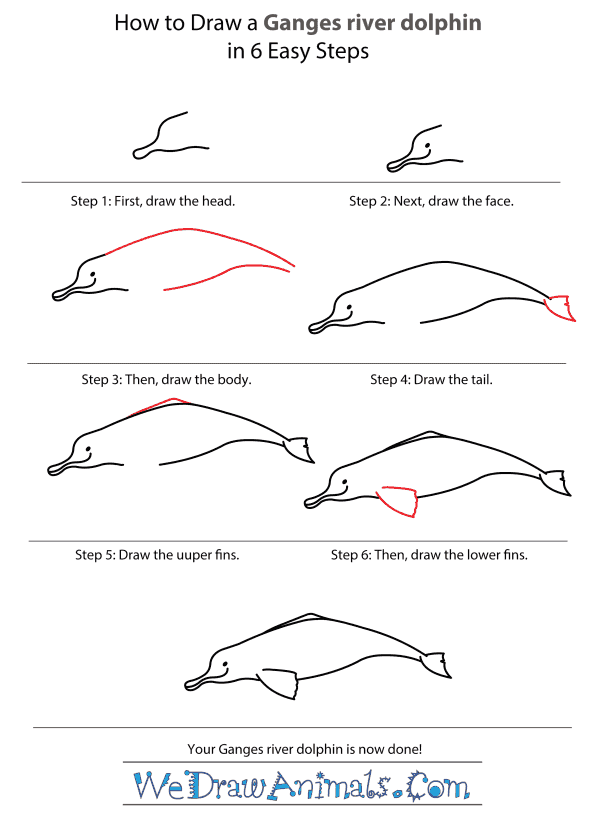In this quick tutorial you'll learn how to draw a Ganges River Dolphin in 6 easy steps - great for kids and novice artists.
The images above represent how your finished drawing is going to look and the steps involved.
Below are the individual steps - you can click on each one for a High Resolution printable PDF version.
At the bottom you can read some interesting facts about the Ganges River Dolphin.
Make sure you also check out any of the hundreds of drawing tutorials grouped by category.
How to Draw a Ganges River Dolphin - Step-by-Step Tutorial
Step 1: To draw the head, start off thin, and then widen drastically
Step 2: Next, draw the face. Divide the front part of the head with a line to make the mouth, and add a dot for the eye
Step 3: Draw the body. Make sure the body is wider in the middle and then thins down for the tail. Make sure to leave space for the tail and the fin.
Step 4: Draw the tail, which looks a little like a rounded triangle.
Step 5: Draw the upper fin. It's barely noticable, but it's a little line that goes up from the middle and then back down.
Step 6: Draw the lower fin in the space you made in Step 3. If you're having trouble, draw a square.
Interesting Facts about the Ganges River Dolphin
The Ganges river dolphin (Platanista gangetica) is a freshwater dolphin, told apart easily from other dolphins by its large snout and visible teeth. They mostly live in the river systems of India, Nepal and Bangladesh.
Did you know?
- These dolphins live in muddy waters, so their eyes do not function. Instead, it uses echolocation (sound bouncing off of objects) to navigate and sometimes for communication.
- Ganges river dolphins can grow to over eight feet long and weight over 300 pounds.
- They usually feed on prawns, catfish, freshwater shark, and other small fish. They prefer to feed mostly in shallow waters or near the bottom of rivers.
- The Ganges river dolphin migrates based on water levels, and spends dry seasons in the deeper waters of rivers while swimming into more shallow waters after monsoons.
- Because of the dense populations around the rivers in which they live, these dolphins have been threatened by damming and electricity generation, which can cut dolphin communities off from one another and prevent migration.
Lesson plan note: Discuss how humans interfere with the Ganges river dolphin’s natural habitat and migration habits and how that poses such a large threat to the dolphins.







